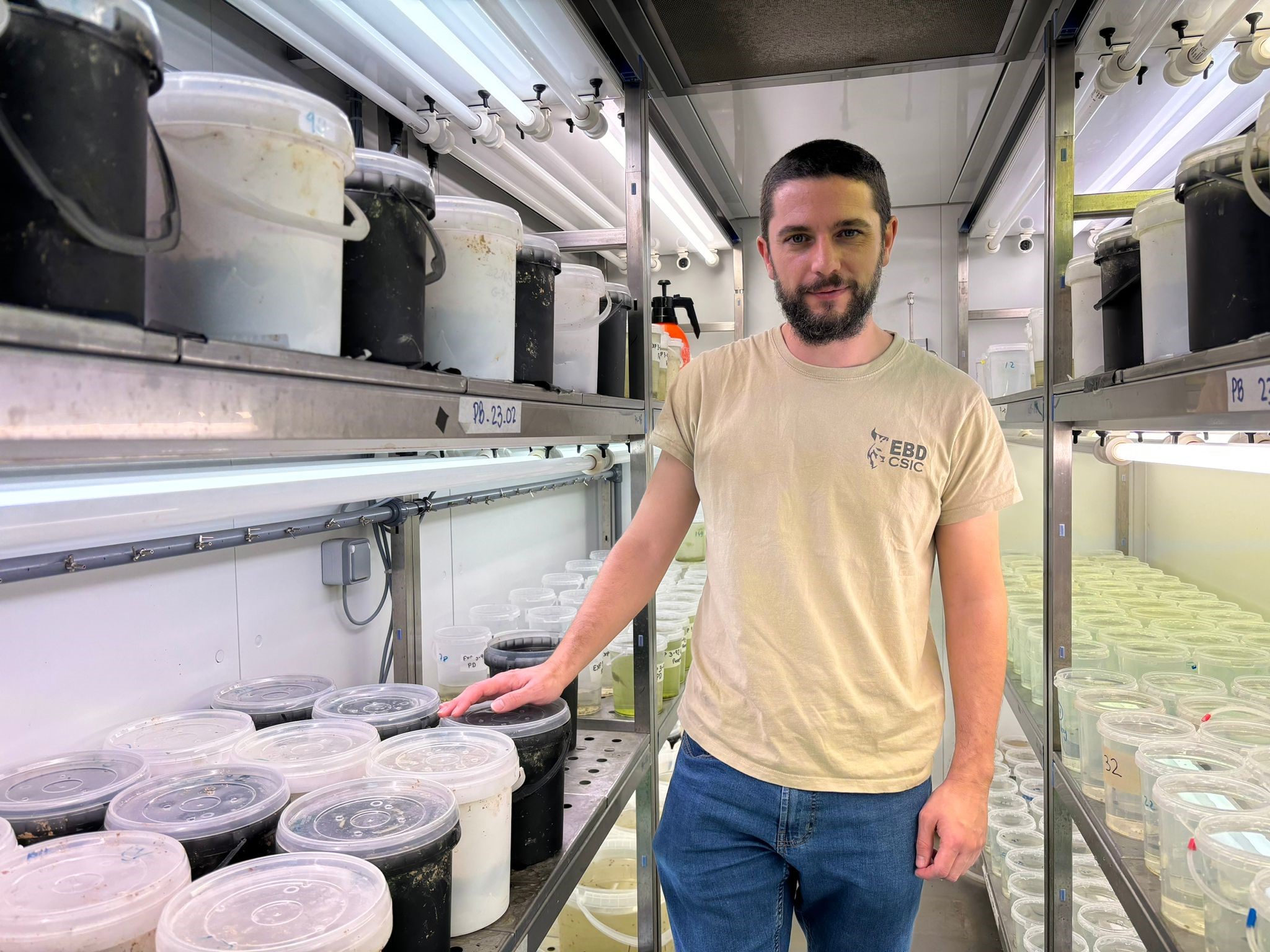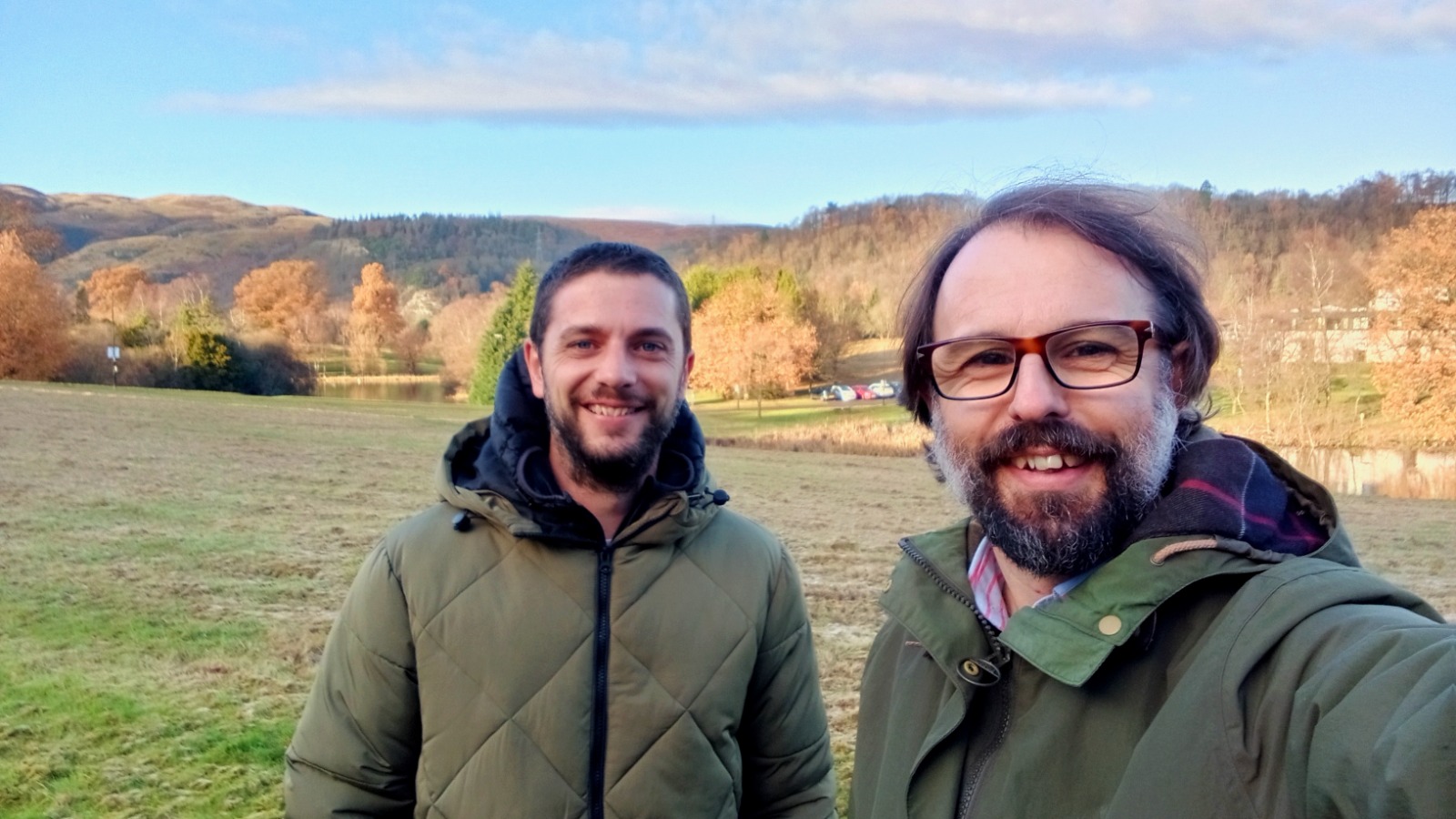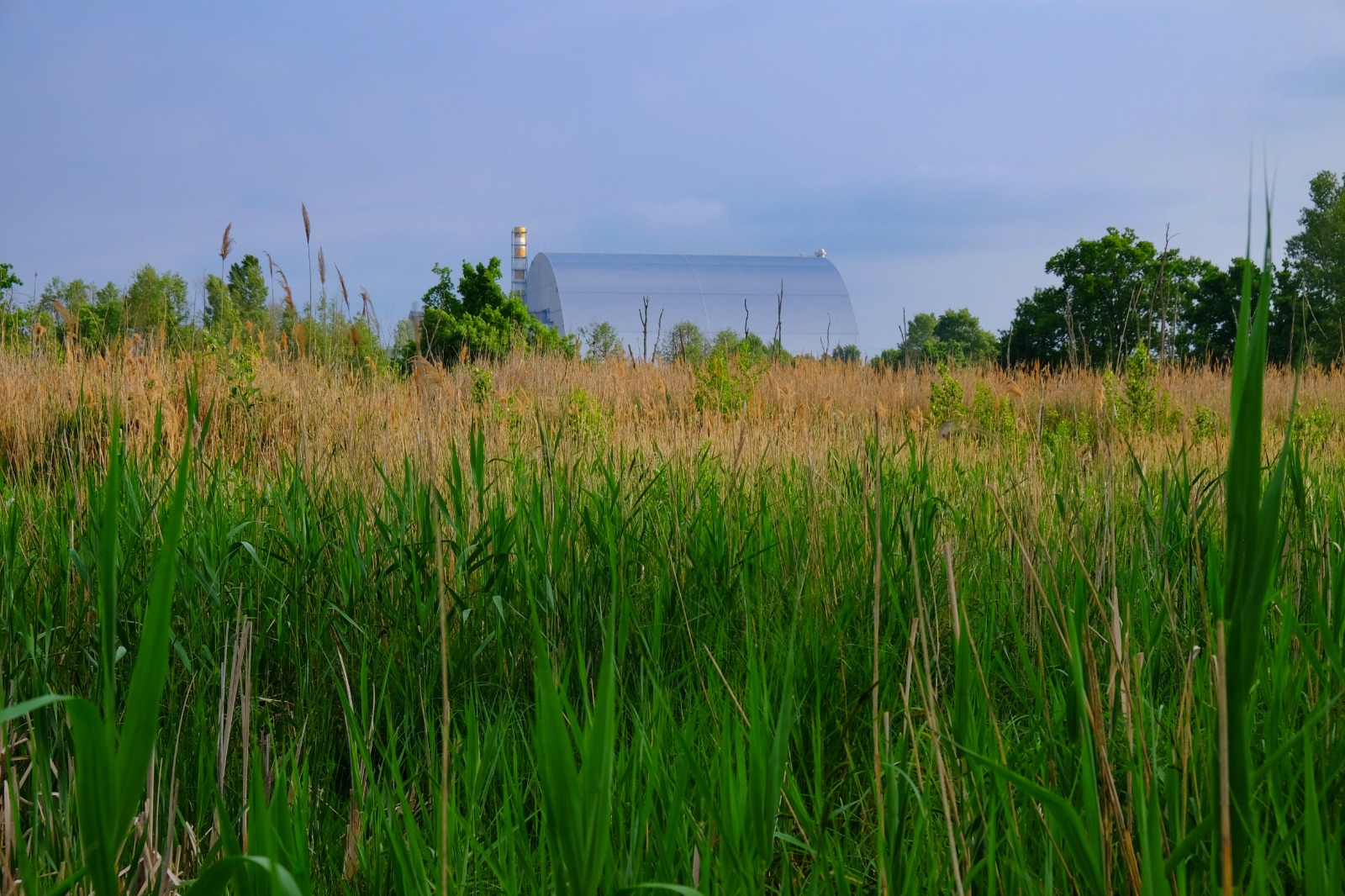Recreating the Chernobyl accident in the lab to study the effects of radiation on biodiversity

The researcher Pablo Burraco, in one of the climatic chambers of the Doñana Biological where he is conducting one of the experiments. Photo: Banco de Imágenes EBD-CSIC
On April 26, 1986, reactor 4 of the Chernobyl nuclear power plant accidentally exploded causing the largest release of reactive material in history. 38 years later, the Chernobyl area has become an excellent natural laboratory to study how radiation affects fauna and flora and to investigate how species recolonize territories abandoned by humans. A scientific team from the University of Oviedo and the Doñana Biological Station - CSIC has been working in this area for eight years. Today, while the war makes it impossible for them to return to Chernobyl to continue their research, the scientists have launched a series of experiments to recreate the accident and study how radiation affects amphibians and beetles.
"Amphibians are a good study model for this type of research. They are exposed to both aquatic and terrestrial environments and move little, so their exposure to radiation is usually more stable," says Pablo Burraco, a researcher at the Doñana Biological Station - CSIC. The scientist is directing, together with researcher Iván Gómez-Mestre, the first of the experiments in the laboratories of his research center, located on Isla de la Cartuja in Seville. The aim is to simulate a nuclear accident to test whether melanin is a protective factor against radiation, something already suggested by the observational studies they were carrying out in Chernobyl, before the pandemic put the brakes on their projects.
In 2016, researcher Germán Orizaola of the University of Oviedo initiated a study to investigate the effect of radioactivity on the oriental tree frog (Hyla orientalis). The following year he was joined by researcher Pablo Burraco. After three years of exhaustive sampling at Chernobyl, the results seemed to indicate that radiation had little apparent effect on the frogs, except for one thing: their coloration. Those living in the Exclusion Zone, the area that was evacuated after the disaster, had a darker skin than those living outside it. Some even had a completely black coloration, as opposed to the bright green that this species usually has.
"The results suggested that melanin had protected them from ionizing radiation, which is released in a nuclear accident, in a similar way that it protects us from ultraviolet radiation," explains Germán Orizaola. Natural selection must have acted implacably after the nuclear explosion, causing darker frogs to survive in greater proportion than those with greener colorations.

Coloration gradient of the study frog in northern Ukraine. Photo: Germán Orizaola and Pablo Burraco.
Recreating a nuclear accident
The study was merely observational. They had found a correlation that suggested that melanin was a protective factor, but it did not prove it. To do so, they decided to reproduce the nuclear accident under controlled conditions, something they could do in laboratories far from Chernobyl under strict compliance with European regulations.
The researcher Pablo Burraco first place the larvae of the same clutch of Iberian spadefoot toad (Pelobates cultripes), which is very abundant in Doñana, in black and white buckets. It is known that, like many other amphibians and reptiles, the larvae of this species have a great plastic capacity and are able to change the color of their skin depending on the environment. Thus, he would make some toads darker and others lighter. With the collaboration of the National Accelerator Center, the larvae were subjected to different levels of radiation for a short period of time.
"The doses were not lethal so, at first, we did not detect differences in mortality related to coloration," explains Pablo Burraco. The experiment has been ongoing for over a year now and during this time, the toads have been kept in climatic chambers under very controlled conditions to avoid the incidence of other factors. "At the moment they look very good and there are practically no differences in size, but something is starting to happen inside them. We are beginning to see differences in mortality," says the researcher. We will have to wait a few more months to obtain the definitive results.

Los investigadores Pablo Burraco y Germán Orizaola en Stirling (Escocia), donde han iniciado un experimento para investigar cómo afecta la radiación al desarrollo larvario de las ranas del género Xenopus // Foto: Germán Orizaola
The team has recently started another experiment with frogs of the genus Xenopus, following a similar approach. The experiment was conducted at the University of Stirling in Scotland with funding from the Spanish Nuclear Safety Council. In this case, radiation exposure is less intense but longer in duration, replicating the varied radiation levels found in present-day Chernobyl. "With this experiment we want to see what happens if frogs are exposed to radiation throughout embryonic development," explains Pablo Burraco. The researchers will study the effects of radioactivity on the frogs' survival, physiology and morphology.
During these weeks, the team is carrying out tests to start a third experiment with beetles that will also be carried out at the Doñana Biological Station, in collaboration with Francisco García's research group and with the National Accelerator Center. One problem in this type of research is that vertebrates typically have long reproductive cycles. Beetles, on the other hand, have a new generation every 20 days. "Working with beetles we can see if there are transgenerational effects and adaptation patterns to radiation exposure and thus see the evolution in real time," says the researcher.
Working with Przewalski's horse
Another of the projects that the scientific team planned to develop in Chernobyl was related to the study of the recolonization processes of the Przewalski's horse. At one point, there were only a dozen of this horse breed in captivity, but now, due to conservation efforts, hundreds roam freely in Europe and Asia. In 1998, a few individuals were introduced in Chernobyl and the population has grown to around 200 specimens.
As long as the safety conditions are not ideal to return to Chernobyl, the team has decided to start investigating with the population in Burgos (Spain) recently reintroduced as part of the Paleolítico Vivo project. The objective is to initiate genomic research and develop methodologies that can be used later at Chernobyl to study the renaturalization processes of Przewalski's horse and also the effect of radiation on them, which are more similar to humans than amphibians.
Chernobyl, 38 years later
"Chernobyl is not what appears in documentaries," says Germán Orizaola. "It has become a spectacular wildlife refuge." After the nuclear accident, an Exclusion Zone of 4,700 km2 was created around the Chernobyl power plant. Over several decades with minimal human presence, the area has turned into a oasis for biodiversity inhabited by wolves, bears, lynx, and wild horses like Przewalski's.
"We have national parks like Doñana or Picos de Europa in Spain that we should leave only for conservation. There is no need for excursions or roads," says Orizaola. The explosion of the Chernobyl nuclear power plant was one of the most dangerous accidents in the history of mankind. 38 years later, once radiation levels have dropped, the area has become a perfect natural laboratory to understand what happens when humans withdraw from a territory. Sometimes the best solution to conserve nature is simply, according to the researcher, not to disturb it.

On the horizon, the steel "sarcophagus" covering reactor 4 of the Chernobyl nuclear power plant // Photo: Germán Orizaola.